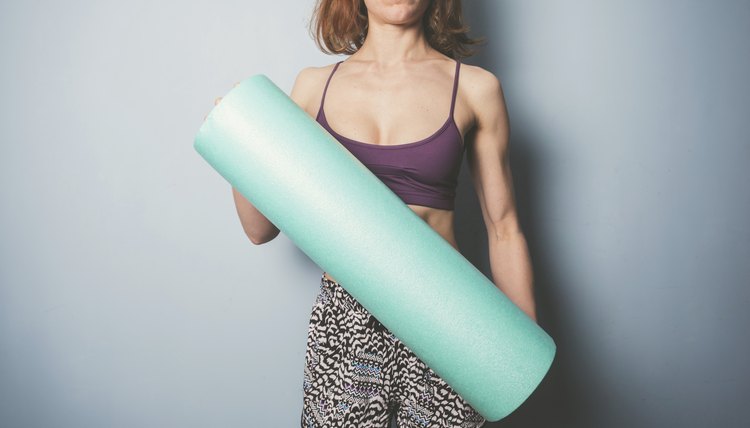What does fact checked mean?
At SportsRec, we strive to deliver objective content that is accurate and up-to-date. Our team periodically reviews articles in order to ensure content quality. The sources cited below consist of evidence from peer-reviewed journals, prominent medical organizations, academic associations, and government data.
The information contained on this site is for informational purposes only, and should not be used as a substitute for the advice of a professional health care provider. Please check with the appropriate physician regarding health questions and concerns. Although we strive to deliver accurate and up-to-date information, no guarantee to that effect is made.
Foam Roller Exercises for SI Joints

Foam roller exercises -- also known as self-myofascial release, or SMR -- are used to break tight knots in the connective tissues around the muscles and tendons. According to the National Academy of Sports Medicine, you can use this technique before and after training sessions to improve tissue elasticity and alleviate trigger points in your lower spine and hips. For each exercise, when you find a tender spot in your muscle or tissue, hold the position and gently rub the area until the tenderness goes away.
Lateral Fascia
This exercise works on release the fasciae that run from your lower rib near the latissimus dorsi muscle down to your lateral hips and outer thigh. The SI joint is connected to the tissues in the lateral parts of your body that keep your body in alignment when you bend forward and backward or when you walk and run. For many people, this may be very painful, so do this with a slow and controlled pattern.
Lie on your right side and place the foam roller beneath your lower rib. Straighten your right leg and cross your left leg over your right leg. Adjust your leg and hip positions as needed during the exercise. Gently roll down your body until you find a tender spot. Slowly work your way down your outer hip and outer leg. When you reach the top of your knee, sit on the ground and place your lower calf on the foam roller. Roll on the muscle and tissues until the tenderness goes away.
Back
This exercise massages the SI joint and its surrounding areas. Be sure to roll your entire spine rather than just the joint. Sit on the foam roller and cross your arms over your chest. Walk your feet forward until the foam roller is beneath your lower back. Proceed to rolling up your spine until you reach your neck. Roll up and down on the foam roller gently as much as needed.
Hips
Massaging the buttocks and muscles near the top parts of your hamstring can loosen the tissues that may be pinching the sciatic nerve. According to Gray Cook, founder of Functional Movement Systems in Danville, Virginia, the tissues and muscles in these areas often cause stiff hips and back. You can alleviate the pain by opening up the areas.
Sit on the foam roller and shift your weight to your left buttock. Cross your left leg over your right thigh to open the hip joint. Place your left hand on the ground behind you and your right hand on the outside of your left knee. Gently roll up and down and to the side until the tenderness goes away.
Explore In Depth
References
- Movement; Gray Cook
- PTontheNet; Essentials of Integrated Training; Michael Clark
- ACE Fitness: Why You Should Be Foam Rolling
- Su H, Chang NJ, Wu WL, Guo LY, Chu IH. Acute Effects of Foam Rolling, Static Stretching, and Dynamic Stretching During Warm-ups on Muscular Flexibility and Strength in Young Adults. J Sport Rehabil. 2017;26(6):469-477. doi:10.1123/jsr.2016-0102
- Beardsley C, Škarabot J. Effects of self-myofascial release: A systematic review. J Bodyw Mov Ther. 2015;19(4):747-58. doi:10.1016/j.jbmt.2015.08.007
Writer Bio
Nick Ng has been writing fitness articles since 2003, focusing on injury prevention and exercise strategies. He has covered health for "MiaBella" magazine. Ng received his Bachelor of Arts in communications from San Diego State University in 2001 and has been a certified fitness coach with the National Academy of Sports Medicine since 2002.
